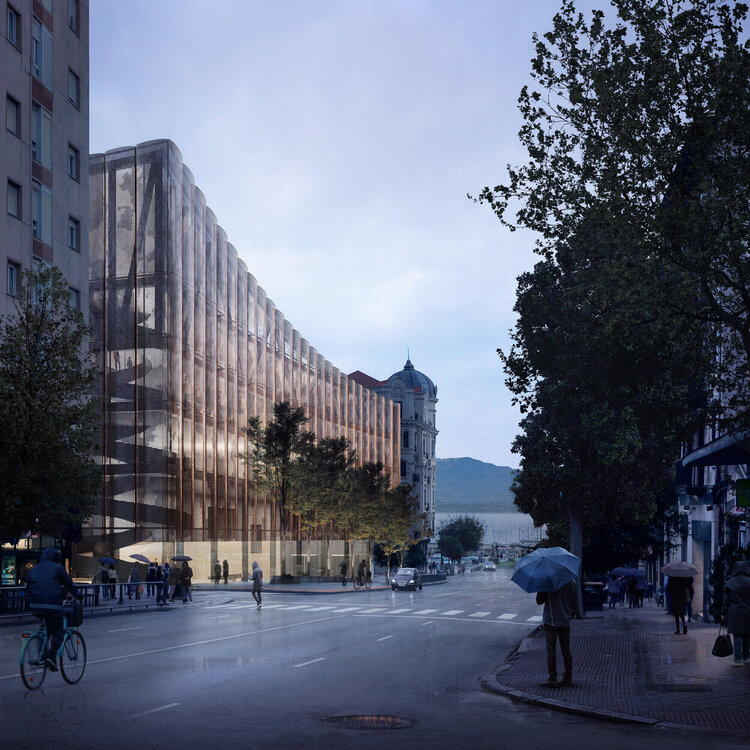Works #590
MUPACDesign Presentation

estudio DIIR
| Location | Santander, Cantabria, Spain |
|---|---|
| Year | 2019 |
| Categories | Architectural Design > Public facilities |
Description Original Language (Spanish)
Borges defined El Aleph as an architectural space where all acts and all times occupy the same point. That is precisely what this project pursues, to make the new MUPAC a public claim, a place full of experiences in which it is not only the museum exhibition that focuses attention, but also everything that surrounds it. The multiplicity of formats, the variety of programs, social life, commerce or research are equated with the purely exhibition and elevate this organism to the category of public forum. Along these lines, the project emphasizes the need to give visibility to its architecture by offering an experience that will be delivered to the public. This is how the urban space itself becomes the beginning of a journey that captures the citizen and shows architecture as a relational environment for collective learning.
This desire to achieve uniqueness in each space is explained through the study of the cave and the cabin, two of the most primitive forms of shelter in the Iberian Peninsula. The obvious differences between the two ways of life are used to build a universe of opposites. On the one hand, a round box of perfect proportions represents the cave and contains the most precious collections inside. On the other hand, and flanking this large cube, some indeterminate platforms define the cabin and house those tangential places in which the mediation between agents becomes decisive.
While the cave functions as a space for introspection where the user intimately connects with art, the cabin promotes new models of socialization. One, like a covered camera, always looks inwards, the other, on the contrary, opens onto the city. While the cave emanates from the earth itself, the cabin detaches itself from it. One works in compression and in continuity with the earth, the other transmits its gravity in an articulated way. One is massive, heavy, and stereotomic, the other is light, bony, and tectonic. While the statism of the cave builds a timeless and rigid space, the cabin is defined as an ephemeral and changing construction. One defends the purity and constructive simplicity in its materiality, the other aspires to the dematerialization of its mass. While the cave tends towards the dark and promotes subtle and strategic hollows, the cabin tends towards the light and defends itself from it. One is emphatic and monolithic, the other indeterminate and free.
In short, Aleph extols this double condition and defends the richness of contrasts. The museum will continue to be understood as a cave that guards heritage, but it will have to be helped by its cabin, to publicly share the findings found there.





